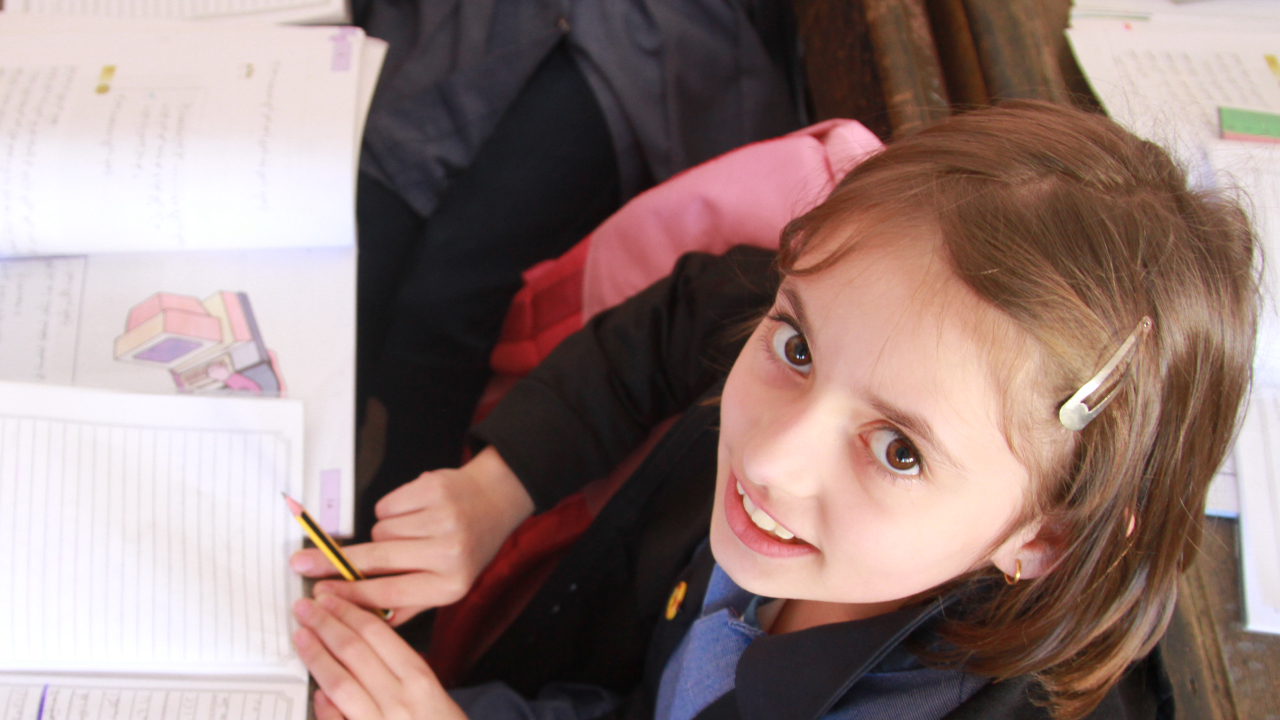Over the 2017-2018 academic year, the Queen Rania Foundation (QRF) ran a series of pilots with the goal of improving students’ learning outcomes. One of these pilots was the Morphological Awareness pilot, which aimed to improve the students’ Arabic language outcomes; mainly comprehension, through explicit instruction on Arabic Morphemes.
Morphemes are the smallest units of language that have meaning and cannot be further divided. Example of a morpheme in English would be “un” which negates words it is attached to, “re” which denotes again. Based on existing literature,[1] it was hypothesized that introducing the explicit instruction of morphemes into teaching, by making explicit reference to the meaning of root words, suffixes, and prefixes in instruction, would have extensive benefits towards improving children's literacy and comprehension skills in the Arabic language.
The pilot entailed a pedagogical intervention targeting the teaching of morphemes in Arabic. Currently, in the Jordanian national curriculum for the early grades, morphemes are taught through pattern recognition; explicit rules are not presented to the students. The intervention trained teachers on how to make explicit reference to morphemes, and teach their students morphological rules in language. The content of the pilot[2] was developed by a taskforce of members from the Queen Rania Teachers Academy and the Ministry of Education, who were also responsible for teacher training.
A randomized control trial was conducted in 20 schools targeting 2nd to 5th-grade students, and the pilot was implemented in only 10 of those schools for one academic year (September 2017-May 2018). Both treatment and control schools followed the national curriculum; however, treatment school teachers were given a teacher booklet that included new ways to teach Arabic morphemes, and training to use the suggested approaches. Additionally, students were supplied with exercise booklets, which included exercises on morphemes to scaffold their learning. By conducting baseline and endline assessments, and satisfaction surveys for both groups, the impact of the pilot on the students’ learning outcomes and attitudes on the new method of learning was measured.
A mixed method approach was used to evaluate the program; quantitative and qualitative data was collected. Quantitative tools included: the Early Grade Reading Assessment, a test developed by the MoE, a technical assessment on Morphemes, and a perception survey. Second and third-grade students were assessed using EGRA and fourth and fifth-grade students were given a test developed by the MoE. The satisfaction and technical surveys on morphemes were administered to all students. Qualitative tools included focus groups conducted with the treatment school teachers to solicit their opinions and feedback on the design, training, content, and implementation of the pilot.
Based on the results from the satisfaction survey, we found that the majority of students of all four grades were satisfied with the program and believed that morphemes had helped them in learning Arabic. On the other hand, based on the results from the EGRA, technical assessment on morphemes, and the MOE test, we found that the program did not improve the literacy outcomes of the students in a statistically significant manner.
Given our findings, we believe further study is required to explore this approach before scaling it. Although the students and teachers indicated that they enjoyed and benefited from the pilot, the outcomes did not reflect any learning gains. This could be due to several reasons, including the small sample size, selection bias and the need to develop bespoke assessment tools. Further exploration and a more comprehensive process evaluation on the influence of morphemes, and how to integrate them in the Arabic curriculum need to take place before such a pilot is considered for scale.
[1] Bowers et al., 2010; Carlisle, 2010; Kirk & Gillon, 2009
[2] The initial framework of the content was developed by Dr. Abdullah Al Shdaifat - Assistant Professor at the University of Jordan
